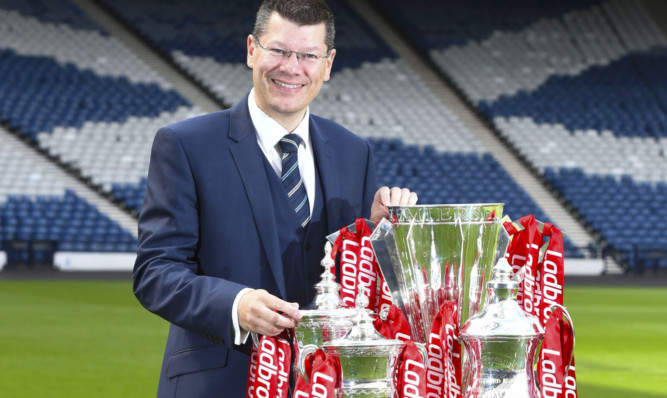
The biggest reconstruction revolution in the history of Scottish football is on the cards.
And I have to take some credit for the proposal about to be considered by the SPFL.
It comes from my time playing in Switzerland and Austria.
It is for two top leagues of 12 Premier 1 and Premier 2 if you like plus a third division of 18.
In it, the top two would play each other twice, a total of 22 games for each team.
They would then split into three leagues of eight.
Post-split, each team would play each other twice, an additional 14 matches. This would mean each of the top 24 clubs playing 36 games.
That, I am sure, would be an acceptable number to all.
The Third Division clubs would also play each other twice, but without a split.
This would give them 34 fixtures, two less than those in the higher divisions, but that’s a small differential.
Crucially, it would give everyone an equal number of home and away matches over the campaign.
The revolutionary part of this system is that the top four of Premier 2 would get to play in Premier 1 the following season.
The bottom four would be in Premier 2.
So essentially what you get is a play-off league where everyone is fighting for promotion or survival.
Having been involved as a player on the Continent, I can tell you this is a very exciting format one.
It is also a fairer system.
Over 14 games, there would be no excuses. And it would make for terrific entertainment.
If you take this season, for example, after 22 games we would have had a middle league of Hearts, Rangers, Hibs and Queen of the South from the Championship.
They would have been up against Premiership outfits St Mirren, Motherwell, Ross County and Partick Thistle.
I am sure that line-up would appeal to fans up and down the country.
No-one likes to see dead rubbers at the end of a campaign, and this system would eliminate more of them than any other.
Right from the start of the season, teams would be vying with one another to make sure they were in the top eight.
I would add a further refinement to the plan I first suggested shortly after coming back from playing in Europe, and which came back on the agenda a couple of years ago.
For the second part of the season, the top eight teams would start off with the points they had picked up from the other teams who made the cut.
The results from the four who were heading off into the second would be disregarded.
This is important because it could have a significant impact on the title race.
If Aberdeen were to beat Celtic, for example, early in the year it would not be lost in the changeover.
The same would apply in the bottom of the eights.
In their case, it would be the results against the four going up which would be disregarded.
Two teams would go down and I would also have the third bottom team play-off against the third top from the league of 18.
The middle eight would be the exception. In this division everyone would start with a clean sheet.
The bottom league would work in a more conventional way.
Two would go down and two would come up from the pyramid.
Combined, these changes would bring a freshness and a brightness to our football.
I have heard the arguments against from those who point out that Austria and Switzerland tired of this system and voted it out.
That is true, they did. But only after 20 years!

Enjoy the convenience of having The Sunday Post delivered as a digital ePaper straight to your smartphone, tablet or computer.
Subscribe for only £5.49 a month and enjoy all the benefits of the printed paper as a digital replica.
Subscribe